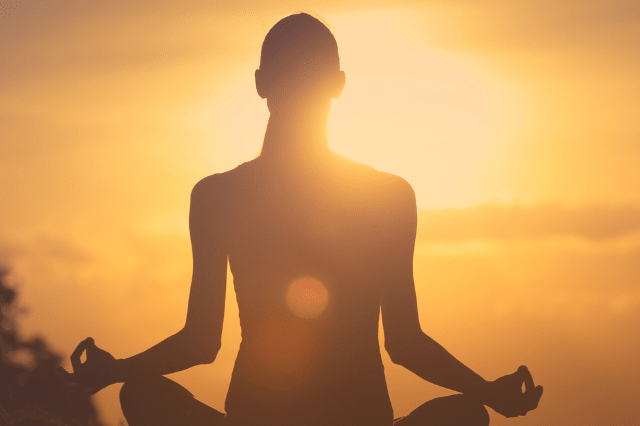In the fast-paced world we live in, finding moments of peace and gratitude can be challenging. However, incorporating a morning gratitude meditation practice into your daily routine can be a game-changer for your mental and emotional well-being.
This article delves into the concept of morning gratitude meditation, exploring what it is, its benefits, recommended frequency, and step-by-step guidance on how to practice it effectively.

What is Morning Gratitude Meditation?
Morning gratitude meditation is a mindful practice that involves cultivating a sense of gratitude and appreciation for the present moment, as well as for various aspects of your life. It is a form of meditation that focuses on acknowledging and expressing gratitude for the positive aspects of your life, no matter how small or seemingly insignificant.
The foundation of morning gratitude meditation lies in the ancient practice of mindfulness and meditation. By combining these principles with the intentional expression of gratitude, individuals can create a powerful and positive start to their day.
What Does Morning Gratitude Meditation Do?
- Shifts Focus from Scarcity to Abundance: Morning gratitude meditation encourages individuals to shift their mindset from a scarcity mentality to one of abundance. Rather than focusing on what is lacking, practitioners concentrate on the abundance of positive aspects in their lives, fostering a sense of contentment.
- Enhances Emotional Well-being: Regular practice of morning gratitude meditation has been linked to improvements in emotional well-being. Expressing gratitude triggers the release of neurotransmitters like dopamine and serotonin, often referred to as the “feel-good” chemicals, contributing to an overall uplifted mood.
- Reduces Stress and Anxiety: Engaging in gratitude meditation has been shown to reduce stress and anxiety levels. By acknowledging and appreciating positive elements in one’s life, individuals can create a sense of calm and inner peace, even in the midst of life’s challenges.
- Promotes Positive Relationships: Gratitude meditation can extend beyond personal well-being to positively impact relationships. When individuals cultivate a grateful mindset, they are more likely to express appreciation and kindness towards others, strengthening social connections.
- Increases Resilience: Developing a habit of morning gratitude meditation can enhance resilience in the face of adversity. By focusing on the positive aspects of life, individuals build a mental and emotional fortitude that helps them navigate challenges more effectively.

How Often Should You Practice Morning Gratitude Meditation?
The frequency of morning gratitude meditation varies from person to person based on individual preferences and schedules. However, incorporating this practice into your daily routine can yield the most significant benefits. Here are some guidelines to help you determine the frequency that works best for you:
- Daily Practice: Aim to practice morning gratitude meditation daily to establish a consistent routine. Making it a part of your morning ritual helps set a positive tone for the day ahead.
- Flexible Duration: The duration of each session can vary, but starting with 5-10 minutes is a reasonable goal for beginners. As you become more comfortable with the practice, you can gradually extend the duration to deepen the impact.
- Adapt to Your Schedule: Tailor the frequency and duration to fit your schedule. Whether you choose to practice every morning or a few times a week, the key is to make it a sustainable and enjoyable part of your routine.
- Experiment and Adjust: Pay attention to how you feel after each session and adjust the frequency accordingly. If you find that daily practice is too overwhelming, start with a few times a week and gradually increase as you become more accustomed to the routine.
How to Practice Morning Gratitude Meditation: A Step-by-Step Guide
Now that we understand the significance of morning gratitude meditation, let’s explore a step-by-step guide to help you incorporate this transformative practice into your daily life.
Step 1: Find a Quiet Space
Choose a quiet and comfortable space where you won’t be easily disturbed. This could be a corner of your bedroom, a cozy chair, or even a spot in nature if possible. Creating a serene environment enhances the effectiveness of your meditation practice.
Step 2: Settle into a Comfortable Posture
Sit or lie down in a comfortable position. Ensure that your spine is straight, your shoulders are relaxed, and your hands are resting comfortably in your lap or on your knees. If you prefer, you can close your eyes to minimize external distractions.
Step 3: Take a Few Deep Breaths
Begin by taking a few slow and deep breaths. Inhale deeply through your nose, allowing your lungs to fill with air, and exhale slowly through your mouth. This helps relax your body and brings your attention to the present moment.
Step 4: Focus on Gratitude
Shift your attention to the concept of gratitude. Reflect on the positive aspects of your life, both big and small. Consider your relationships, achievements, and the simple joys that bring you happiness. Allow yourself to genuinely feel a sense of gratitude for these elements.

Step 5: Express Your Gratitude
As you focus on the positive aspects of your life, begin expressing your gratitude either silently in your mind or, if you prefer, out loud. You can use phrases like “I am grateful for…” or “I appreciate…” to verbalize your feelings of gratitude.
Step 6: Visualize the Positivity
Take a moment to visualize the positive elements you are expressing gratitude for. Picture them in your mind and immerse yourself in the emotions associated with each one. Visualization adds a powerful dimension to your practice, reinforcing the positive impact of gratitude.
Step 7: Cultivate a Grateful Mindset
Throughout the meditation, aim to cultivate a general sense of gratitude that extends beyond specific instances. Focus on the overall abundance in your life, fostering a mindset of appreciation for the present moment.
Step 8: End with a Moment of Reflection
As you conclude your morning gratitude meditation, take a few moments to reflect on how you feel. Notice any shifts in your mood or mindset. Acknowledge the positive energy you’ve cultivated and carry it with you into the rest of your day.
Step 9: Consistency is Key
Consistency is crucial in establishing a morning gratitude meditation practice. Make a commitment to incorporate this practice into your daily routine, adjusting the duration and frequency based on your preferences and schedule.
Conclusion
Morning gratitude meditation is a powerful tool for enhancing your overall well-being and transforming your outlook on life. By cultivating a mindset of gratitude, you can experience a profound shift in your mental and emotional state, leading to increased happiness, reduced stress, and improved resilience.
Incorporate this practice into your daily routine, adjusting it to suit your needs, and witness the positive impact it can have on your life. Embrace the transformative power of morning gratitude meditation and embark on a journey towards a more fulfilling and joyful existence.


